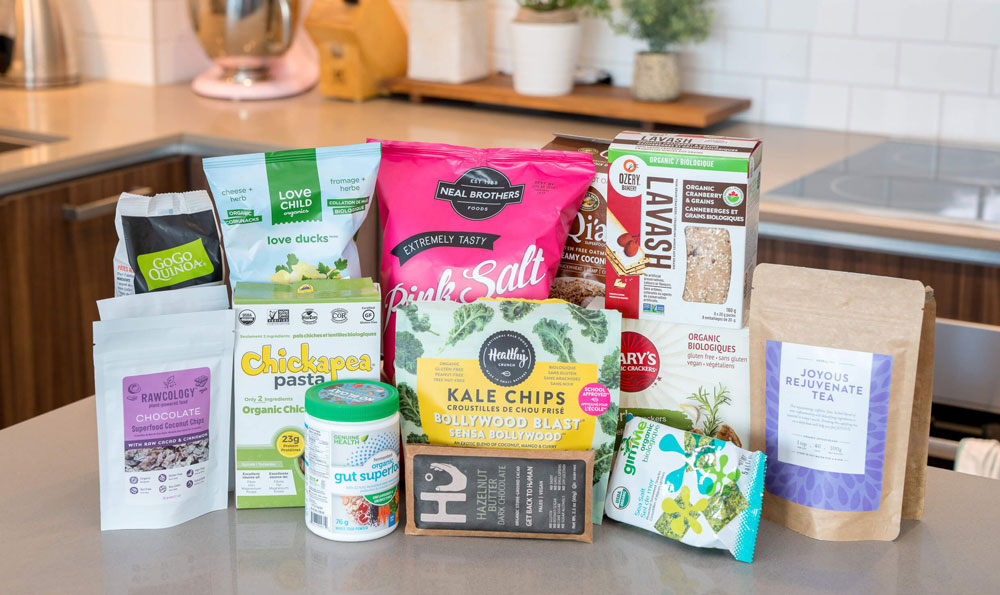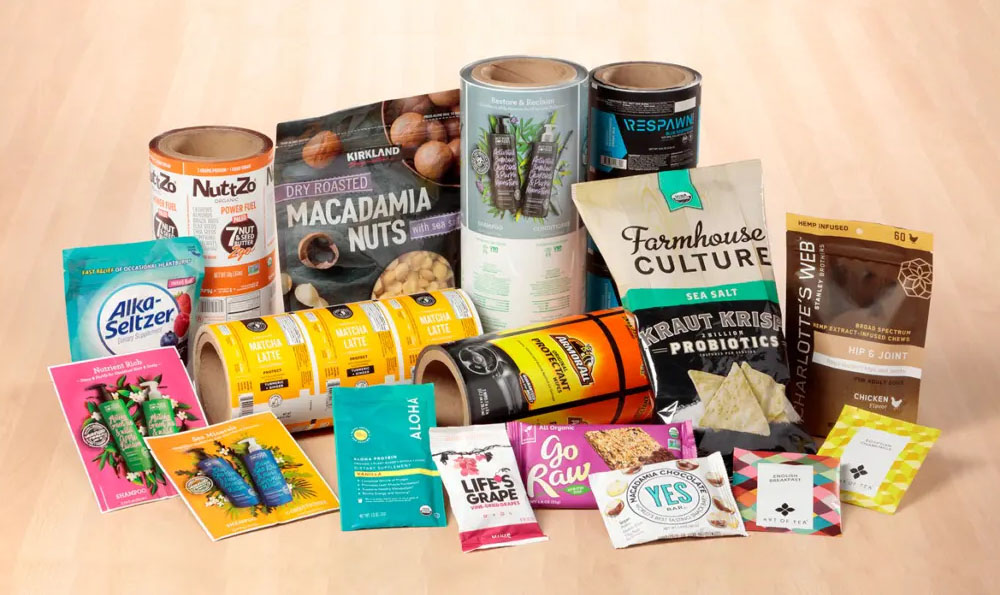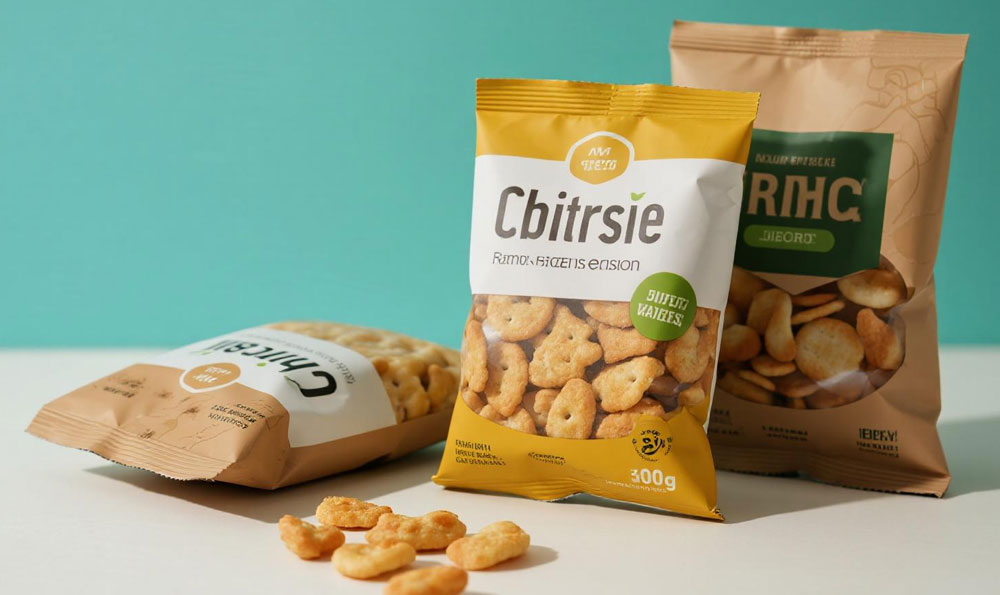Views: 4 Author: Site Editor Publish Time: 2025-07-31 Origin: Site







Sustainability is a growing concern today, with both businesses and consumers seeking greener solutions. One of the most effective ways to reduce environmental impact is through eco-friendly food packaging.
In this article, we’ll explore popular and effective eco-friendly packaging options. Whether you're a business or a conscious consumer, you'll find solutions that align with your sustainability goals.
As consumer awareness of environmental issues grows, eco-friendly food packaging options are becoming increasingly important. More businesses and consumers are turning to sustainable solutions to reduce their environmental impact. Traditional packaging, often made from plastic, contributes heavily to pollution and waste, which harms ecosystems and wildlife. Sustainable packaging materials offer a way to help mitigate these negative effects.
These packaging materials, designed to be recyclable, biodegradable, or compostable, reduce the reliance on single-use plastics. This shift not only helps in cutting down the amount of waste that ends up in landfills but also reduces the energy and resources required in production. For example, many sustainable options, like plant-based plastics or recycled paper, use renewable resources, making them a better choice for the environment.

Choosing eco-friendly food packaging solutions is a crucial step toward building a sustainable future. It allows businesses to align with growing consumer demand for sustainability while also reducing their own carbon footprints. Additionally, many of these materials can be recycled or composted, promoting a circular economy where resources are reused, not discarded. As the demand for greener options grows, it becomes increasingly clear that switching to eco-friendly packaging is not just beneficial, but necessary for a cleaner, healthier planet.
Traditional packaging materials, such as plastics and Styrofoam, pose significant environmental challenges. These materials are not biodegradable, meaning they can remain in the environment for centuries. As they break down, they release harmful substances into the soil and water, further polluting our oceans and landscapes. Plastic waste, for example, is one of the largest contributors to marine pollution, affecting wildlife and ecosystems worldwide. In contrast, eco-friendly food packaging materials are designed to reduce waste and minimize pollution. Materials like biodegradable plastics, recycled paper, and plant-based packaging decompose naturally, ensuring less waste ends up in landfills and oceans.
As awareness about environmental issues increases, consumers are becoming more selective about the products they buy, especially when it comes to packaging. Many consumers are actively seeking eco-friendly food packaging that aligns with their values, favoring brands that prioritize sustainability. This shift in consumer behavior is driven by growing concerns about pollution and climate change. In response, companies are increasingly adopting sustainable packaging solutions to attract environmentally conscious customers. By making the switch to eco-friendly packaging, brands not only reduce their environmental footprint but also demonstrate a commitment to the planet, which can enhance their reputation and appeal to a broader audience.
Compostable packaging is made from natural materials that break down into organic matter in composting environments. These materials leave behind little to no waste, making them an environmentally friendly option. Popular compostable options include cornstarch, bagasse (which comes from sugarcane), and bamboo fiber. These materials are often used for food containers, trays, and utensils. By choosing compostable packaging, businesses can help reduce the amount of waste that ends up in landfills, contributing to a healthier planet.
Biodegradable packaging is designed to break down over time, though it may leave behind small traces like microplastics. Materials such as polylactic acid (PLA) and polyhydroxyalkanoates (PHA) are commonly used in biodegradable packaging. While these materials decompose more easily than conventional plastics, they still require specific conditions to break down fully. This makes them a good alternative to single-use plastics in many applications, but they must be disposed of properly to achieve their full environmental benefits.
Recycled packaging is made from materials that have already been used and processed. This includes paper, cardboard, and certain plastics. Recyclable packaging can be reused in the production of new products, which helps conserve resources and reduce the need for virgin materials. By using recycled materials, companies contribute to a circular economy where products are continually reused, which minimizes waste and lowers the environmental impact.
Bioplastics are made from renewable plant-based resources, such as cornstarch and sugarcane. These materials offer a more sustainable alternative to traditional plastics. Bioplastics can be biodegradable, meaning they break down more quickly than conventional plastic, or they can be recyclable, further reducing their environmental impact. Plant-based packaging is gaining popularity because it provides the benefits of both renewability and reduced reliance on fossil fuels.
Edible packaging represents a creative and revolutionary approach to reducing packaging waste. Made from materials like seaweed and starch, edible packaging can be consumed along with the food it contains. This innovative packaging eliminates waste by allowing the consumer to eat the wrapper. Though still in the early stages of development, edible packaging has the potential to drastically reduce the environmental burden of single-use packaging. Check to see more information about sustainable packaging materials.
Eco-friendly packaging often comes at a higher cost compared to traditional materials. This is due to the use of specialized materials, advanced production processes, and the limited availability of sustainable raw materials. While these packaging options help reduce environmental impact, the initial investment can be a barrier for many businesses. However, the long-term benefits—such as reduced waste, lower carbon footprints, and increasing demand for sustainable products—can make the investment worthwhile. Over time, as demand for eco-friendly options increases, production costs are expected to decrease.
Another challenge lies in educating consumers about eco-friendly packaging. Many people still don't fully understand the difference between biodegradable and compostable materials, which can lead to confusion about proper disposal methods. For instance, biodegradable packaging might break down slowly, leaving behind microplastics, while compostable materials require specific conditions to decompose completely. This lack of knowledge can affect the effectiveness of sustainable packaging. Clear labeling, public awareness campaigns, and educational resources are essential to ensure consumers use these products correctly, maximizing their environmental benefits.
Eco-friendly food packaging helps lower the carbon footprint by using renewable and recyclable materials. Traditional packaging materials like plastic are made from fossil fuels, which contribute to greenhouse gas emissions during production. In contrast, materials like bioplastics, paper, and plant-based fibers require less energy and emit fewer harmful gases. By shifting to sustainable packaging, businesses can significantly reduce their environmental impact and support a cleaner planet.
One of the biggest advantages of eco-friendly food packaging is its ability to minimize waste. Compostable and biodegradable packaging naturally breaks down over time, reducing the volume of waste that ends up in landfills and oceans. Unlike plastic, which can take hundreds of years to decompose, these materials return to the earth, enriching the soil. As a result, they help keep our environment cleaner, while reducing the burden on waste management systems.
Eco-friendly packaging often uses materials like bamboo, sugarcane, and hemp, which are sourced from sustainable farming practices. These materials promote biodiversity and support regenerative agriculture by encouraging farming methods that restore the soil. In addition, these crops typically require fewer chemicals and pesticides compared to conventional crops, making them better for both the environment and human health. By choosing these materials, businesses can contribute to a more sustainable agricultural system.
At Biopacktech Co., Ltd, we are proud to offer Eco-Friendly Wholesale Sustainable Zipper Bag Custom Stand Up Pouches. These high-quality, customizable pouches are crafted from eco-friendly materials such as bioplastics and plant-based fibers. Designed to meet both your packaging needs and sustainability goals, our pouches provide a reliable, eco-conscious option for businesses looking to reduce their environmental footprint.

| Feature | Description |
|---|---|
| Material | 80% bio-based (bioplastics and plant-based fibers) |
| Recyclability | Yes |
| Compostability | Yes |
| Durability | High, perfect for protecting food products |
| Customization | Available with logos, designs, and sizes |
| Ideal for | Snacks, powders, dried foods, and similar products |
By choosing our custom eco-friendly packaging solutions, your business can contribute to a greener future while enhancing your brand’s image. These bags not only provide practical packaging but also appeal to eco-conscious consumers who prioritize sustainability.
When selecting eco-friendly food packaging, it's important to consider the specific needs of your product. Factors like shelf life, the level of protection required, and cost constraints play a significant role in determining the right material. For example, if your product is highly sensitive to moisture, a durable, moisture-resistant material like plant-based plastic might be necessary. On the other hand, for items that have a longer shelf life and require less protection, compostable packaging could be a suitable option. Each material offers unique advantages, so understanding your product's requirements will help ensure that you choose the most effective eco-friendly packaging solution.
Once you've identified the ideal packaging materials for your product, the next step is finding a reliable supplier. It's essential to partner with a supplier who offers eco-friendly packaging solutions that align with your brand’s sustainability values. Look for suppliers who can provide certifications for their materials, such as biodegradable, compostable, or recyclable labels. These certifications ensure that the materials meet specific environmental standards and are genuinely eco-friendly. Establishing a strong relationship with a trusted supplier will help you maintain consistent quality and support your commitment to sustainability.
Making the switch to eco-friendly food packaging doesn’t happen overnight, but it’s a crucial step for businesses aiming to reduce their environmental impact. Here's how you can make that transition smoothly.
Start by reviewing your current packaging choices. Look at the materials you’re using, such as plastics, Styrofoam, and conventional cardboard. Ask yourself questions like: How long do these materials take to decompose? Do they contribute to landfill waste? Are they recyclable or compostable? Evaluating the environmental impact helps identify areas where you can replace harmful materials with more sustainable alternatives. If you’re unsure about how eco-friendly your packaging is, consider conducting a sustainability audit or seeking professional advice to get a clearer picture.
When it comes to selecting eco-friendly packaging, consider the material’s sustainability, cost, and ability to protect your product. Materials like bioplastics, made from renewable resources such as corn or sugarcane, are gaining popularity. Compostable options like PLA (Polylactic Acid) and bagasse are also worth considering, as they decompose in a way that minimizes environmental damage. Additionally, recycled materials like paperboard and glass are great for reducing waste. However, it's important to balance sustainability with your product's needs. Will the packaging keep your food fresh? Will it protect it during shipping? Don’t forget about the cost either – while eco-friendly materials can sometimes be more expensive, long-term savings can come from reduced waste and increased consumer loyalty.

The next step is to find suppliers who specialize in eco-friendly packaging materials. Working with a reliable packaging provider ensures you’re getting quality, sustainable options. Look for companies that offer products like compostable bags, plant-based wraps, or recyclable cartons. It’s important to choose partners who are transparent about their supply chain practices, certifications, and sustainability efforts. Many packaging providers also offer customization, allowing you to tailor packaging to your brand's needs while ensuring it’s eco-friendly. By collaborating with these specialists, you ensure your packaging aligns with your sustainability goals and meets regulatory standards.
Once you’ve switched to eco-friendly packaging, let your customers know! Educating them on why you made the change and how it benefits the environment can strengthen your brand’s reputation. People care about sustainability, and when they see you making an effort, it creates trust. You can communicate this in various ways: on your website, through social media, or by including sustainability information directly on your packaging. The more informed your customers are about your eco-friendly practices, the more likely they are to support your brand and remain loyal in the long run.
Eco-friendly packaging doesn’t just have to be sustainable; it also needs to function well for your product. Here are some tips to ensure your packaging is both eco-friendly and practical:
Keep it simple. Avoid excess layers or materials.
Consider minimalist designs that use fewer resources.
Make sure your packaging is easy to recycle, compost, or reuse.
Choose materials that can protect your food during transport without compromising their environmental benefits.
Explore flexible packaging options, such as stand-up pouches, which use less material than traditional rigid containers and are easier to recycle.
Designing sustainable packaging doesn’t mean compromising on your brand’s image. It’s about finding the right balance between sustainability and practicality.
Eco-friendly food packaging is essential for businesses aiming to meet consumer demand for sustainability. By using materials like compostable, biodegradable, and recyclable options, businesses can reduce waste and improve their reputation. It's time to adopt these sustainable solutions and contribute to a greener future.
Eco-friendly packaging helps reduce waste, conserve resources, and lower environmental impact, benefiting both the planet and businesses.
No, biodegradable materials break down slowly, while compostable materials decompose faster and leave no harmful residue.
By adopting sustainable practices, brands attract eco-conscious customers and demonstrate a commitment to environmental responsibility.
While it may have higher upfront costs, the long-term benefits, including reduced waste disposal and consumer loyalty, make it worth the investment.
Common options include plant-based plastics, recycled paper, bagasse (sugarcane), and biodegradable plastics like PLA.